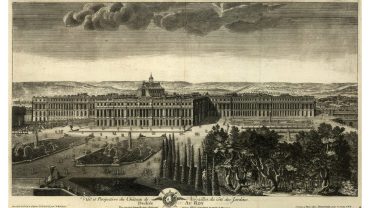The Vatican is among the oldest continuously operating institutions in the world, and over the centuries the position of Pope has often held considerable power.
In a world of carefully managed process, maybe the most elusive part of the entire micronation is the Vatican Archives, or the Archivo Secreto Vaticano, now renamed the Vatican Apostolic Archive. Its 53 miles of shelving and tens of millions of documents are believed to hold some of the rarest, most controversial and most important documents ever written.
The archive is said to hold the letter written by Mary, Queen of Scots, to Pope Sixtus V begging for her life; the handwritten transcript of Galileo’s heresy trial; Henry VIII’s request for a marriage annulment and the minutes of the trials of the Knights Templar.
However, for sheer insanity, one set of papers in the archive trumps all others. The Trial of the Dead. This is the astonishing, bizarre and almost unbelievable story of Pope Formosus and the Synodus Horrenda, otherwise known as the Cadaver Synod.
Who Was Pope Formosus?

Portrait of Pope Formosus (Photo: DEA / ICAS94 via Getty Images)
Born as Formoso, probably in Rome, around 816 AD, the story of how his decomposing corpse ended up in a chair in the Basilica of St John Lateran over eighty years later takes some explaining…
Ninth century Europe was a time of great social and political upheaval. Western Europe was divided into small, self-contained fiefdoms whose rulers all wanted to be named the Bishop of Rome, otherwise known as the Pope. However, to be Pope, it was felt that all who aspired to be God’s representative on Earth needed the additional leverage from the city’s secular leaders.
During the reign of Nicholas I, Formosus was the cardinal bishop of Porto, the suburb of Rome. He was a popular and very successful missionary and later helped to spread the word of God throughout the Bulgarian kingdom.
He served under Popes Adrian II and John VIII and was a leading candidate to be named the next Pope, however in a sudden change of fortunes John VIII turned on him. He accused Formosus of violating a law designed to stop bishops from creating fiefdoms, as well as violating a law that forbade openly and blatantly aspiring to the papacy. Fearing he was getting too close to the Bishopric of Rome, Formosus was excommunicated by John but later absolved by Pope Marinus I.
His influence in Rome grew and after the quick successions of popes Adrian III and Stephen V, the election of Pope Formosus took place on 6th October 891.
The Events that led to the Cadaver Trial

Portrait of Pope Boniface VI (Photo: DEA / ICAS94 via Getty Images)
During his reign, Pope Formosus was a successful and popular pontiff. However, he made one very powerful enemy.
Guy III of Spoleto was the Holy Roman Emperor but he had a deep mistrust of Formosus. The pope had been asked to name Guy’s son as co-emperor in an attempt to exert political strength over the pope. Formosus knew what was at stake and plotted to have the Spoleto family overthrown by their bitterest rivals. The powerful Spoleto’s vowed revenge but they were denied their day in the sun when Pope Formosus died of a stroke in April 896.
After Formosus died, the sixteen-day reign of Pope Boniface VI was followed by Pope Stephen VI who was supported by the resurgent Spoleto family. At their urging, Pope Stephen VI put Pope Formosus on trial, partly to legitimise his own pontificate in the eyes of the powerful Spoleto family.
What happened next comes straight from the pages of the most gruesome horror story ever written. This is the story of the Pope Formosus trial, otherwise known as the Cadaver Synod.
The Cadaver Trial

Portrait of Pope Stephen VI (Photo: DEA / ICAS94 via Getty Images)
The body of Pope Formosus – dead around seven months – was exhumed, dressed in his papal robes and tied to a chair inside the Basilica of St John Lateran, the cathedral church of the Diocese of Rome and the seat of the Bishop of Rome, or as we know him best, the Pope.
A deacon was chosen to be the voice of the dead pope.
Formosus was then charged with being unworthy of the pontificate, of violating canon law, of perjury and of serving as a bishop while technically a layman.
Acting as judge, jury and executioner, Pope Stephen VI conducted the trial himself. He screamed the most horrific insults at the rotting corpse, mocking the former pope for outwardly coveting the papacy in front of horrified clergy and putting on a one-man show, largely for the benefit of the Spoleto family.
Of course the verdict was in no doubt. Pope Formosus was found guilty of all charges.
After the verdict was read aloud, the corpse was stripped of the papal vestments and dressed as a pauper. To add insult to injury, Stephen cut off the three fingers of his right hand that he used for blessings, he invalidated all of the dead pope’s acts and ordinations and had him re-buried.
The Legacy of the Cadaver Synod

The Cadaver Synod, 897(Photo: DEA / BIBLIOTECA AMBROSIANA via Getty Images)
The Pope Formosus trial, known as the Trial of the Dead, shook the papacy to its very core. This was a grotesque show trial of politics and not piety. This most macabre of events turned the people of Rome against Stephen. He was deposed, imprisoned and strangled in his cell.
The next two popes, Theodore II and John IX annulled and then nullified the Cadaver Synod and subsequently excommunicated seven cardinals who sided with Stephen and ensured no pope could ever be tried post mortem.
Not only was the Cadaver Trial a grotesque confirmation of the adage that power corrupts and absolute power corrupts absolutely, it was arguably the darkest point in the history of the papacy.












